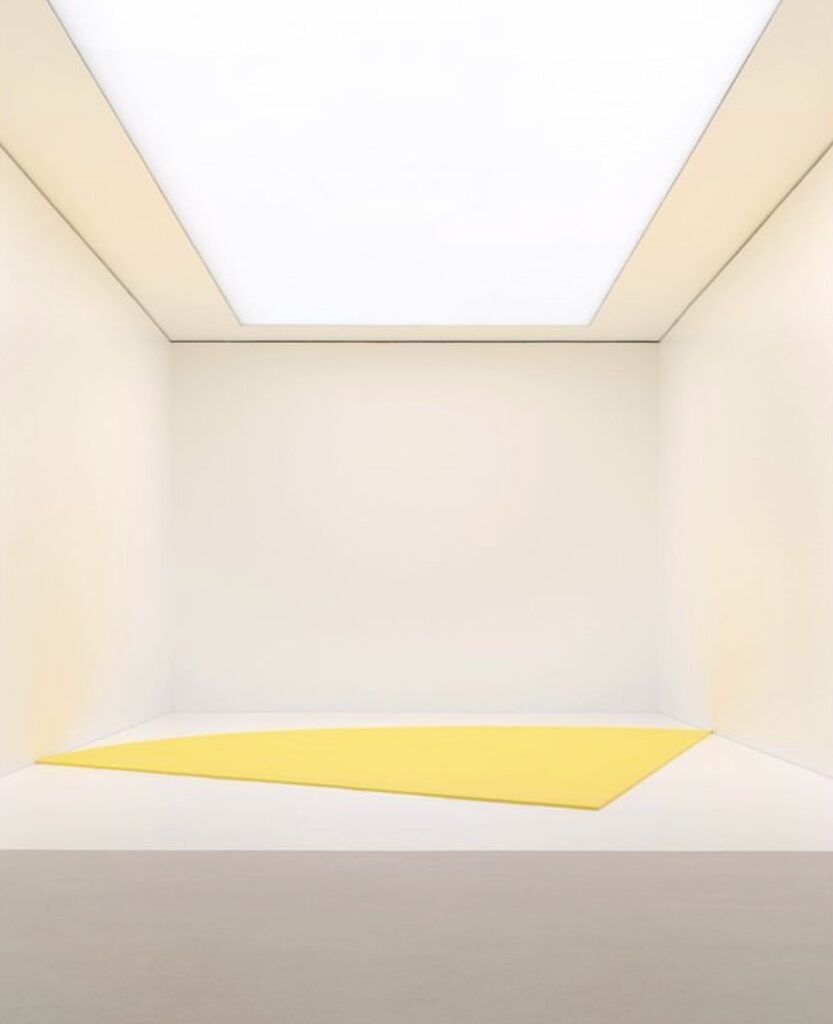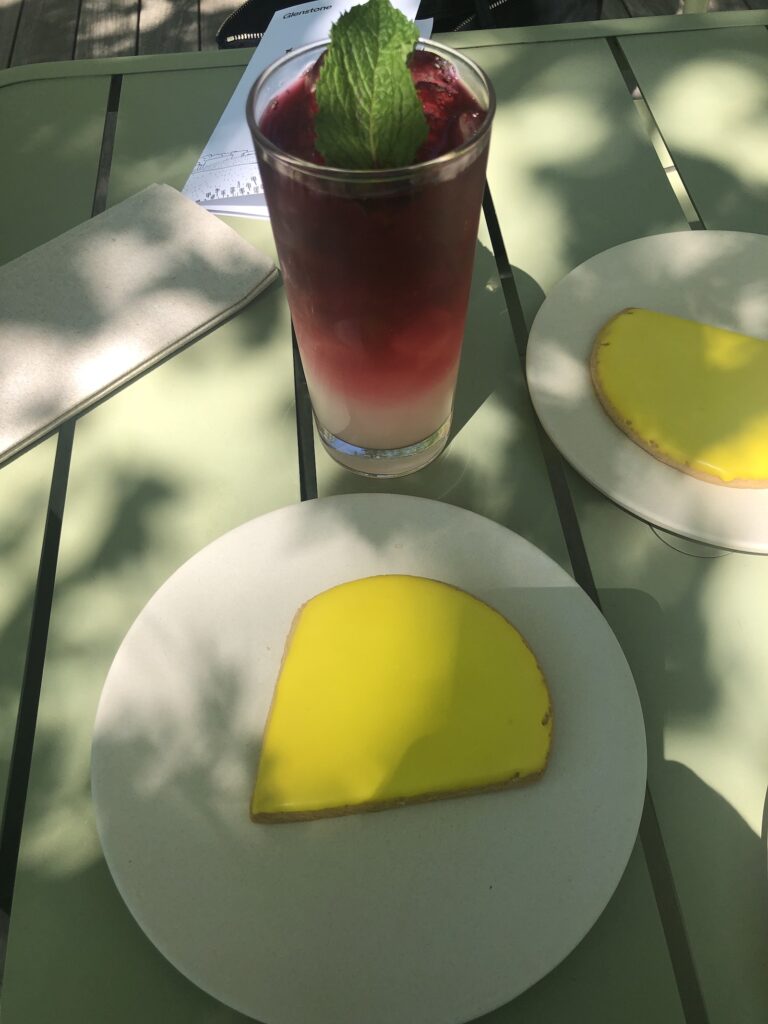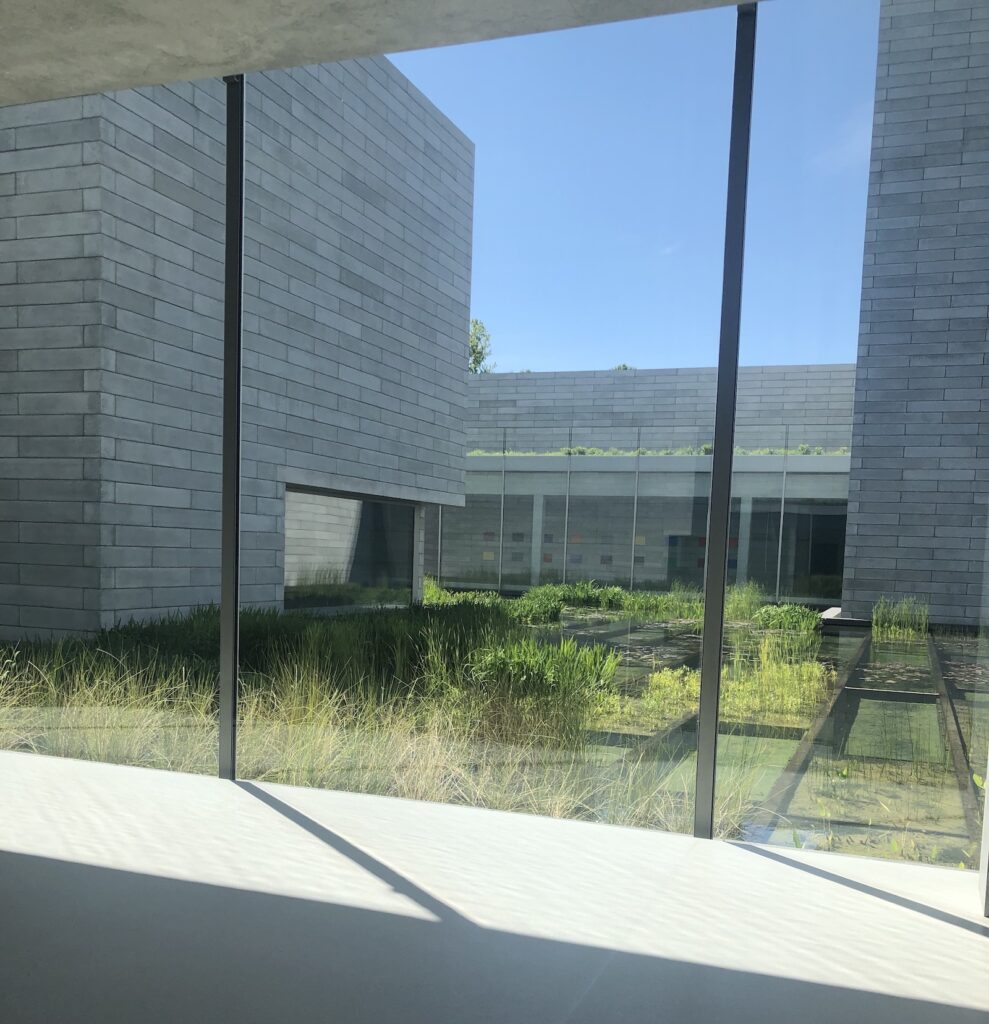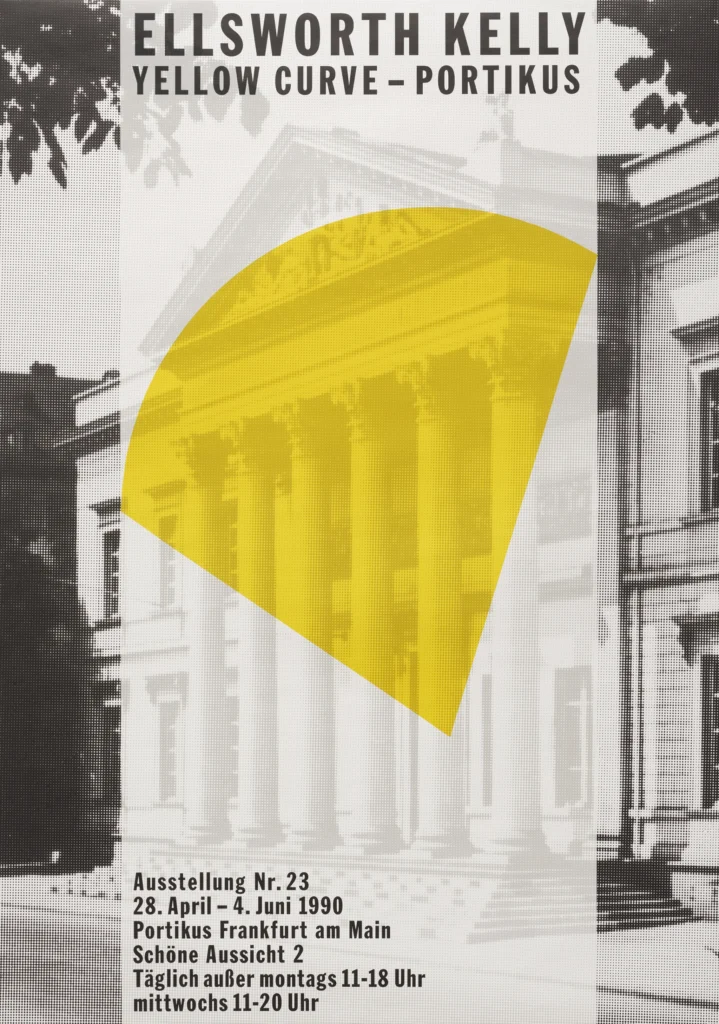
We went to Glenstone to see the Ellsworth Kelly exhibition last week, which is wonderful. The show is an overwhelming physical experience the likes of which I don’t recall having with Kelly’s work, even at the Guggenheim. So that’s interesting. The loans were tremendous; the Fondation Louis Vuitton’s roomful of later paintings makes sense, as they’re taking the show. It also felt interesting that some major collectors of Kelly’s work weren’t involved. It didn’t diminish the show, though.
There were spiderwebs on the torqued ellipse, both across the sunnier surfaces inside, where they were like glitter, and also in a few of the gaps up high. The Koons was still unplanted, I guess I’m glad they didn’t feel the need to rush it for the Kelly opening.

The floor work was incredible. After all this, I didn’t realize it was considered by the artist to be a new work, not just a reinstallation of the original 1990 piece at Portikus. It felt like a Turrell, or a Doug Wheeler. There’s something extraordinary, though, about the Rales’s capacity to recreate an architectural space of a specific, historic dimension, to accommodate an artist’s work. It’s here with the Gober room, and with the Kelly. In the Kelly’s case, there is also a fascinating vitrine outside with documentation of the work, and Kelly’s involvement in realizing it at Glenstone, including the specs for the support and the recipe for the color. Let a thousand bootleg Kelly floor pieces bloom.

We took these cookies home to plant them, in hopes that they’ll grow to fill the room. Stay tuned.

I was sure that the smaller Color Panels for a Large Wall, Kelly made for himself, which were at Marks in 2019, was in Glenstone’s collection, but it doesn’t show up on the list rn. It is so great up close. So here is a picture of it from far away.
I was going to write about how the only problem with the Kelly show was the difficulty of getting reservations to see it again, but then I checked, and there was an opening today, so I rearranged my schedule, and am heading back.
A few hours later update: The way the Glenstone pieces are grouped together is interesting, like concentrated emphases on Kelly’s practice. It feels more seriously engaged than, say, the Vuitton Fondation buying four works from a late show.
The loans, meanwhile, are mostly from museums and private collections arranged by Matthew Marks. It reminded me of Emily Rales’ conversation with Charlotte Burns last month on The Art World: What if…? podcast, where Rales talked about being a little surprised that Glenstone agreeing to almost every loan request was definitely not standard exhibition procedure. I pictured an inordinate amount of goodwill, more fungible than the niceties of donor development museums are prone to.
For that matter, Rales also talked about Glenstone eventually building a board, and thinking through the question of what a board looks like that is not beholden to fundraising. Though they are surely respectful and perhaps even friendly—as well as competitive—toward other collectors, Glenstone is not beholden to them. And Glenstone’s relationship with other collectors will not necessarily follow the paradigms other museums have created.

And for that other matter, taking more time to study the documents for Kelly’s Portikus floor work felt of a piece. Portikus’ Yellow Curve and the other floor panels were all created in relation to a specific, existing space. When Glenstone acquired their Kelly, in 2015, they created a space in their original Charles Gwathmey building [now called The Gallery], to fit the Portikus work. And then Kelly made it [again.] That realization, during the construction of the new building, was never publicly shown, just an extraordinary treat for the collectors, made possible by an extraordinary deference to the artist.
Previously, related, from 2022: Ellsworth Kelly, Red Floor Panel (1992)
